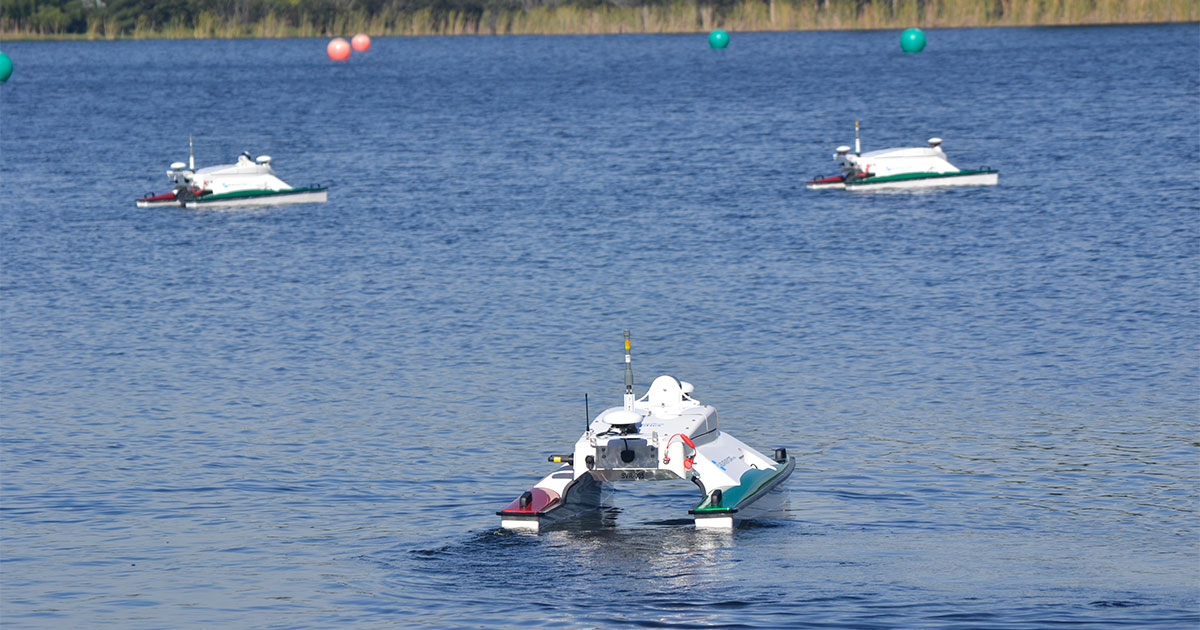The ocean is a complex landscape described by multidisciplinary means—chemical, biological, geological, etc. How the ocean functions and supports ecosystem services can be impacted by internal and external forces. Sea surface temperatures, ocean circulation, nutrient pollution, and ocean acidification are some of the more recent highlighted issues the ocean is facing.
One ocean issue impacting Florida’s west coast and in the Gulf of Mexico is the rising frequency of harmful algal blooms (HABs). This growth of algae or cyanobacteria can cause issues for human health, habitat health, and ocean industry. Blooms can create a deoxygenated environment, decrease light penetration, and cover corals and seagrasses. More sinister blooms can release toxins that will directly kill mammals, birds, and fish.
While these algal blooms can have variable characteristics, they are common in their elusivity, even to this day. The catalyst for HABs can be complex to determine. Heavy storm events that increase coastal runoff, physical ocean circulation events like upwellings, and hurricanes increase wave activity to stir up benthic organic material—all of which can increase nutrient availability in the water column and fuel HABs.

The SR-Surveyor M1.8 is small enough for truck bed transportation and rapid deployment. (Image credit: SeaRobotics)
With an expressed interest in improving our understanding of HABs, researchers from state, local, private, and academic entities have launched programs to monitor and measure conditions surrounding blooms. Research questions surrounding how and when blooms persist are being investigated. Information from these research and monitoring projects has the ability to fuel forecasts and models capable of predicting HAB activity to better prepare coastal communities and industry businesses, like commercial and aquaculture firms.
Up for the Task
Ocean issues like HABs require more than a one-sided viewpoint. Collaborative and multidisciplinary investigations and research operations offer the best way to delve deep into the workings of HABs. Chemical, physical, and biological characteristics must be considered, but they can oftentimes be difficult to capture by a safe and efficient means. This is where the traditional practice of measuring and monitoring when combined with engineered and robotic systems can come out on top.

ASV swarm units, seen in the final assembly, are payload customizable. (Image credit: SeaRobotics)
Recently SeaRobotics provided a series of SR-Surveyor M1.8 autonomous surface vessels (ASVs) for an algal bloom research project. These ASVs will operate using swarm robotics—generally known as the coordination of multiple robotic systems. The ASVs were chosen for several reasons, the following leading them:
- Rapid deployment—due to the compact nature of the ASVs, they can be transported through lean means, like in the back of a pickup truck. This will allow the research team to respond quickly to reports of bloom conditions for fast field sampling operations and swarm coordination.
- Customizable payload—the SR-Surveyor M1.8 can be customized for specified environmental instruments. The adapted system can be used for water quality measurements, habitat mapping, survey, and more.
- Software engineering—the subject matter experts at SeaRobotics have designed host software onboard the ASV and for the swarm. Through the software integration of a cell modem and a Wi-Fi mesh network, SeaRobotics can provide a way for researchers to communicate with the ASV and report back data.
- Safety and efficiency—instead of launching multiple research vessels manned by large teams of researchers, ASVs provide platforms that decrease risk and perform coordinated research efforts efficiently.
Force multiplication is nothing new when it comes to marine survey, but the concept is becoming increasingly applicable—and viable—in the age of compact ASVs. The intuitive interfacing and quick set-up times associated with ASVs are enabling operators with relatively little training to conduct effective multi-boat campaigns, with or without the support of a manned topside vessel. Naturally, this optimizes coverage, but it also drives significant efficiencies: less fuel, fewer personnel hours, and a drastic reduction in operating costs. In short, swarm technologies have the capacity to significantly drive down the cost of data.
The integration of technology across disciplines—engineering, robotics, biology, etc.—and projects like HAB research have the capacity to improve our understanding of offshore and coastal ocean issues and marine environmental phenomena. With fully customizable payloads, ASVs can be adapted for habitat mapping, bathymetry, inspection, survey, and more.
To learn more about SeaRobotics’ full ASV product line, visit: https://www.searobotics.com/
This feature appeared in Environment, Coastal & Offshore (ECO) Magazine's 2023 Autumn edition Multidisciplinary Environmental Projects, to read more access the magazine here.





